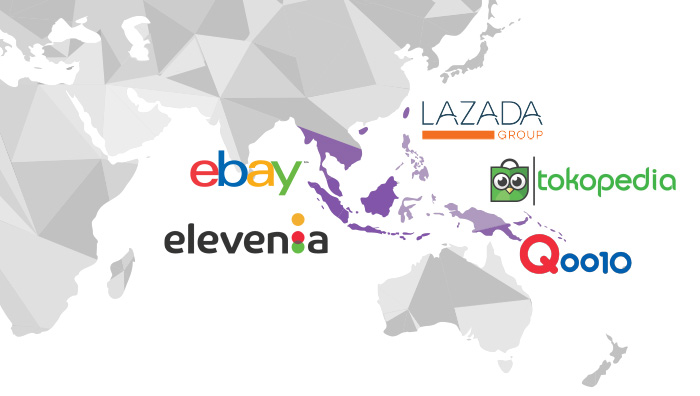

Dilyana Gramadarova
Looking for the first-hand experience on how to seize online business opportunities in Indonesia? Take a look at our interview with Pentagon’s Head of Strategic Partnerships, Dilyana Gramadarova, who is currently working in Thailand to further develop the Company’s relationships with the best online marketplaces in the region. Here she shares insights on market segments, trends, product demands, trading models, requirements and how to overcome challenges when operating in different countries.
I’m based in Thailand working from the Pentagon office in Bangkok, our Southeast Asian business hub. I am currently working with European brands and retailers to help them navigate different marketplaces, and assess the opportunities and build and execute their growth strategies. We are also engaged with Qoo10, Elevenia and Tokopedia in Indonesia, all platforms from our global expansion roadmap.
In Indonesia, specifically, we already have a live integration to Lazada and I’m actively working with one of our clients to help boost their online business opportunities in Indonesia by launching them on the region’s most prominent ecommerce platform.

[Some of the marketplaces already present in the area, 2017]
One key difference between the markets is that European consumers were desktop first and then mobile grew in popularity and has now become the leading consumer device to make online purchases. In SEA consumers are mobile first; they simply skipped desktop.
Another difference is that in Europe consumers have access to the fastest and most convenient payment options online, particularly with the rising popularity of one-click checkout methods. In SEA, particularly in Indonesia, cash-on-delivery is still the typical transaction method. In many cases the buyer will not have a bank account, let alone a credit card, so will go to the nearest supermarket and pay for the marketplace order there. Can you imagine that in Europe?!
The third remarkable difference is the advanced European fulfilment processes and convenience of delivery services, in comparison to the developing SEA infrastructures in the different countries. Indonesia has more than 17,000 islands, so the transfer of goods is a significant challenge, which is why there is a limit selection available to consumers. This is why consumers are willing to wait longer for a delivery and want to buy from wider product selection online. In Europe, drones and driverless vehicle are being tested, while in Indonesia logistics is one of the most complex and expensive activities.
A typical online shopper in Indonesia would be a twenty-seven years old middle-class woman with a mobile phone. She likes products on offer and she is curious about new products and brands, as she knows the offline selection is limited in her region. Indonesia is the fourth most populous country in the world with a fast-growing middle class. Internet network infrastructure is constantly improving and mobile phones become more and more affordable, so more people use them to buy online as well as to share their shopping experience online.
In addition, the Indonesian government has committed to improving the transport infrastructure. All of these factors, along with local people associating Western brands with top quality and leading trends, mean the online business opportunities in Indonesia show enormous long-term exponential growth.
There are many ways in which the online buyers’ experience is evolving over time. Online users are becoming more and more demanding, and online marketplaces are continuously advancing. The three main words describing the type of experience buyers are looking for are: customised, engaging, convenient. That is valid now and will become even more important in the next few years.
Sellers have a key role in that type of experience. Therefore, to succeed, sellers need to invest time and resources in understanding the various marketplace specific tools and leveraging their full potential daily to create the desired buying experience. Alternatively, sellers can partner with us to deliver the technology, resources and expertise for them.
The advice I would offer first-sellers is very extensive and varies depending on the seller’s business set up, trading product vertical, growth capabilities, targets for SEA marketplaces and so on.
To start with, I would suggest, once you have your eyes on a SEA marketplace, do your homework and check if your brand(s) or products are already available in that specific market either online or offline; check for channel conflicts too. If you are the official brand owner, for instance, check if there are restrictions due to agreements with existing resellers. If you are a reseller, check to see if you have an official written allowance to sell in your desired markets.
If you are selling your unique product(s) you also might want to check if there are any similar propositions in the new market you are interested in launching. A successful launch, growth strategy and operations on a new market require investment, and the last thing you want is to do it all just to find out shortly after that you have to stop and rethink it all and start all over.
The best sellers in SEA vary per marketplace, as well as category and so do the product gaps. Across category and the region, consumers demonstrate a huge appetite for fashion products, cosmetics, and mother and baby products. Best sellers also change over time for any platform depending, for example, on the campaigns sellers broadcast for their products.
Food supplements are also popular with significant gaps in the market, but we should keep in mind that there are government specific regulations and certification requirements playing an important role in the process for foreign brands and suppliers to enter that market.
What I find most fascinating about ecommerce in SEA is the immense market growth ahead, the fast evolution and fierce competition of online marketplaces in the region.
That is why to run successful launch campaigns and to generate sustainable and growing sales on multiple domestic channels you need to put more effort into A) identifying the competitive advantage and optimal positioning for your brand/products and B) localising end-to-end the user experience with your brands/products. Localisation involves inventory management automation to scale your business up across multiple marketplaces, as well as merchandising to engage buyers and convert them into loyal customers.

Let us develop a tailored solution for your business that will help you reach new international customers and grow your global sales.
get in touch